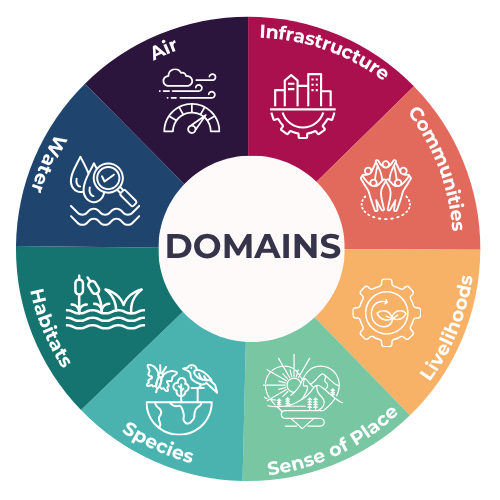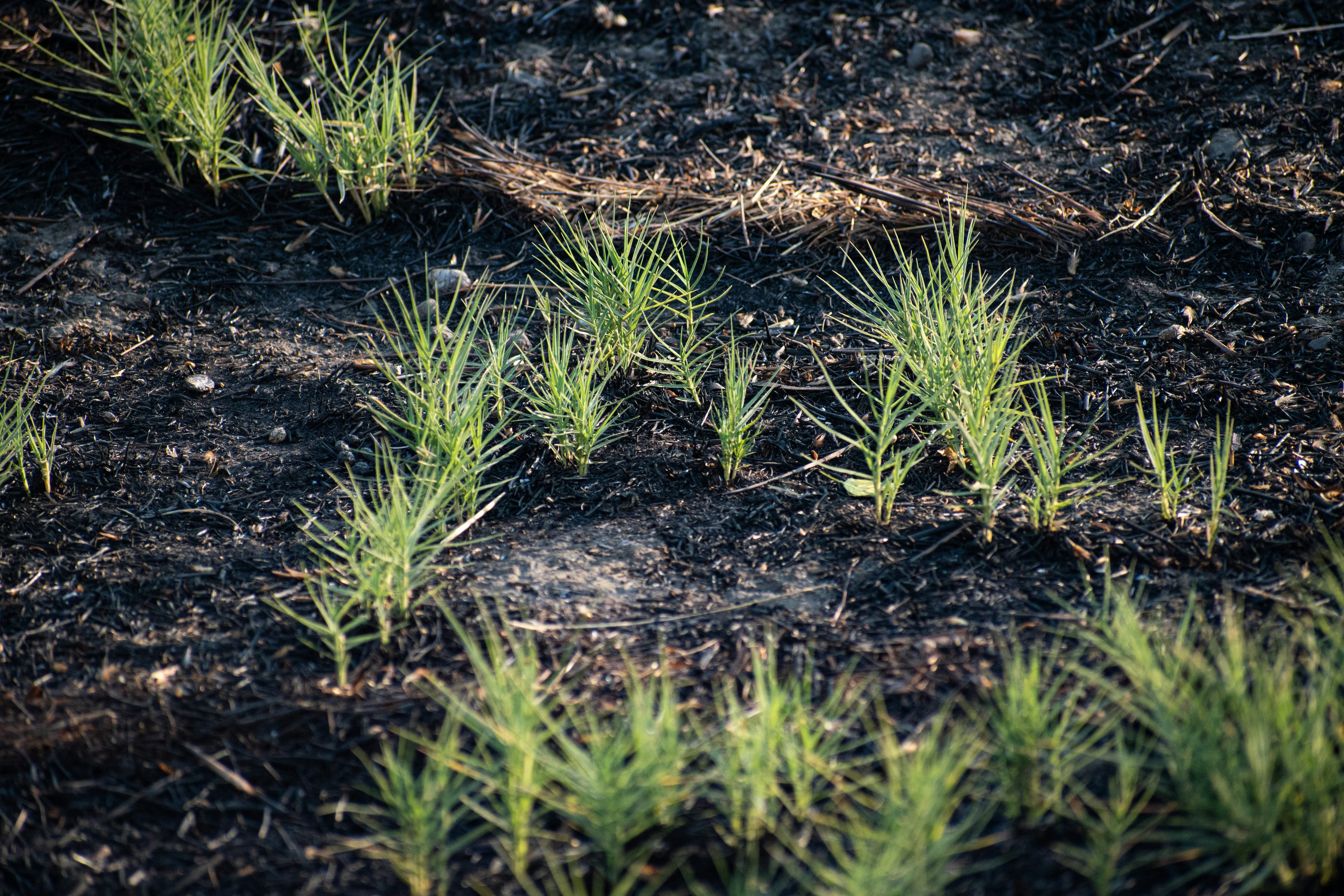When Wildfire Resilience Meets Artificial Intelligence

When Wildfire Resilience Meets Artificial Intelligence
Wildfire season in western North America has grown longer, hotter, and more unpredictable. Fire is essential to the health and function of western ecosystems, and coexisting with it requires understanding the relationships between communities and the wildfires that shape western landscapes. While many scientists focus on how fires behave, others are working to equip coexisting communities and resource managers with the knowledge needed to support effective land management and build resilience. At the National Center for Ecological Analysis and Synthesis (NCEAS), one team is using AI as a powerful tool to advance that understanding and strengthen wildfire resilience across the West.
The Wildfire Resilience Index (WRI), developed by researchers at NCEAS with support from the Moore Foundation, helps communities and decision-makers visualize local opportunities and liabilities in terms of wildfire resilience – i.e. resistance and recovery. Wildfire resilience is not about fire behavior—it’s about people, places, and preparedness. WRI provides a comprehensive, integrated view of resilience by combining factors like community preparedness, social vulnerability, water quality, and species conservation. WRI scores are calculated across a variety of topic areas, or domains, to provide a multilayered view to express how resilient a place may be should a wildfire occur. This tool translates complex science into information that can guide planning and collaboration across the region.
Creating a tool at this scale requires handling vast amounts of data with precision and consistency. AI has become a partner in making that possible, not by replacing researchers, but by supporting and extending their work.

The social and ecological domains help create a holistic picture of wildfire resilience across all kinds of landscapes, from the most remote reaches of the Yukon Territory to urban centers in Southern California.
AI as a Partner in Process
AI now plays a hands-on role in the WRI workflow, supporting analysts throughout every stage of development. The WRI team runs scripts through ChatGPT to streamline data processing, standardize workflows, and identify potential errors across complex data pipelines. By integrating AI assistance into the code development process, analysts can readily scale repetitive tasks and ensure uniform data formatting.
Script translation can be lengthy and monotonous, which is why WRI data analysts like Joe DeCesaro turn to AI to complete the task. In the earlier stages of the project, DeCesaro reflected on how the team used AI to translate scripts between two different programming languages , R and Python.
“Our team was more comfortable working in R and RStudio at the start of this project but we were working at the limit of its capabilities for geospatial operations. AI helped us quickly translate operations from R into Python scripts that were much better at handling larger geospatial tasks. In one instance this made a script that previously took 24 hours to run in R, run in under one hour in Python.”
Leveraging AI tools saves time and allows researchers to focus on the tasks only humans can do: interpreting results, identifying patterns, and generating insights. DeCesaro added, “One of the biggest tasks that is now easier is identifying what error messages mean exactly, where they are occurring, and what can be done about them. Previously error messages involved using search engines and various websites to find posts about similar issues and unpacking how it applies to what you are doing. With AI it is much easier to come up with a solution that works and how to best implement it.”
AI-enabled iteration accelerates and scales the implementation of complex analytical tasks while also making it easier for users to understand, reproduce, and build upon the work.

The project's working group consists of NCEAS team members and external experts in forestry, fire ecology, computing, and other disciplines.
Establishing Standards and Efficiency
Using ChatGPT as a tool has also driven improvements in project organization and documentation. The WRI team is developing clear internal standards for formatting scripts and documenting inputs and outputs, ensuring that analyses remain transparent and reproducible. Standardizing code across large projects with multiple contributors can be time-consuming, requiring extensive attention to minor details of syntax, structure, and style. AI is a powerful tool for performing this work quickly. By automating tedious formatting and consistency checks, AI-tools act as a quality control assistant to help maintain clarity, uniformity, and collaboration across the code base.
As Cat Fong, the program lead for WRI, explained, “AI tools lower the barrier to participation in coding, and can serve as an interpreter or mediator between scientist and machine. Coding is incredibly specific, and tiny errors in syntax can cause hours or days of headaches. AI tools can rapidly screen code and identify problems (and solutions). It can help you make your vision a reality, lowering technical barriers and helping people skill up rapidly.”
Fong also shared, “I barely remember a time before we used these AI tools! It’s been incredibly transformative, and tasks that historically took hours or specialized training can now take minutes. Personally, I don’t write much code anymore. I work with a chatbot to co-develop code. It’s much more efficient to iterate with a chatbot about what I want to execute.”
By taking on time-consuming tasks, AI has enabled Fong’s team to integrate hundreds of datasets into the index in a fraction of the time it would have taken otherwise.

The smoke from wildfires can cause more smoke particles to be present in the atmosphere. The can cause light from the sun to scatter differently than normal—making the skies more pink, red, and orange.
Connecting to a Larger Vision
These innovations align closely with the NCEAS AI for the Planet Initiative, which explores how AI can accelerate environmental science and climate solutions. NCEAS projects like WRI demonstrate how AI can be used as a tool to amplify human capacity—helping scientists focus on synthesis, creativity, and decision-making while automation handles the repetitive groundwork.
As Fong noted, “It’s critical to point out that AI isn’t making any decisions for the project, it’s simply a support tool. AI doesn’t dictate what data layers we use, how we process them, or how we interpret outputs. We as scientists are entirely in the driver's seat. AI is an instrument for implementation, not a tool for creative development or design.”
Finally, Cat emphasized the broader potential: “Traditional ecological training often misses the computational side of modern science. In my own education, I never took a coding or computer science course, even though I had multiple classes in experimental design, statistics, and ecological modeling. I think AI can help lower the barrier to entry for these more computationally intensive approaches, allowing more scientists to participate. I really see AI as a democratizing force in science. It lowers barriers, brings more people into the fold, and expands our collective ability to work with large datasets to solve pressing ecological challenges. Most importantly, it lets humans focus on what we do best—thinking broadly, creatively, and synthetically. AI helps us explore, test, and discover more rapidly. It’s a really exciting time to be doing science.”
As the Wildfire Resilience Index continues to evolve, it illustrates the growing role of AI as a practical tool for science. By combining the analytical power of machines with the perspective and judgment of researchers, NCEAS and its partners are advancing a more resilient, data-informed approach to wildfire coexistence—one that transforms information into action across the West.

The pine cones from some species of evergreens like those growing here only release their seeds after exposure to fire, which allows them to open.
